

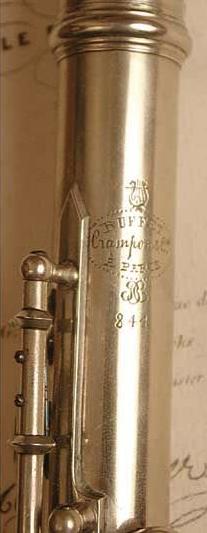 |
Buffet-Crampon & Cie.
|
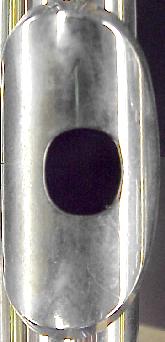 |
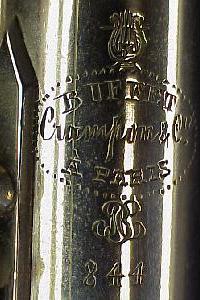 |
The maillechort body appears unplated,
with very fine pitting evident throughout but solder joins in good
condition. The quite thin .0125" tubing is not extruded but
rolled and soldered, with the seam running down the inner (chin) side
of the headjoint and along the outer edge of the body and footjoint
straps. The body engraving on the left shows the seam bisecting the "B"
in Buffet. The footjoint engraving on the right shows the seam
cutting through the "n" in Crampon. Head engraving is identical
to the foot. |
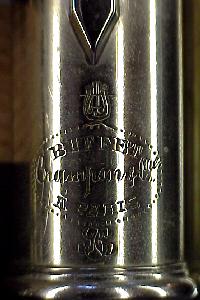 |
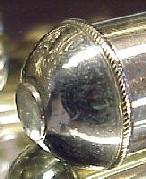 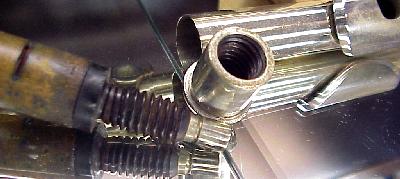 Beneath the metal plating, the
wood crown is female
threaded to mate with the wooden screw cork adjuster and perforated for
the metal cork position indicator Beneath the metal plating, the
wood crown is female
threaded to mate with the wooden screw cork adjuster and perforated for
the metal cork position indicator |
|
|
|
|
|
|